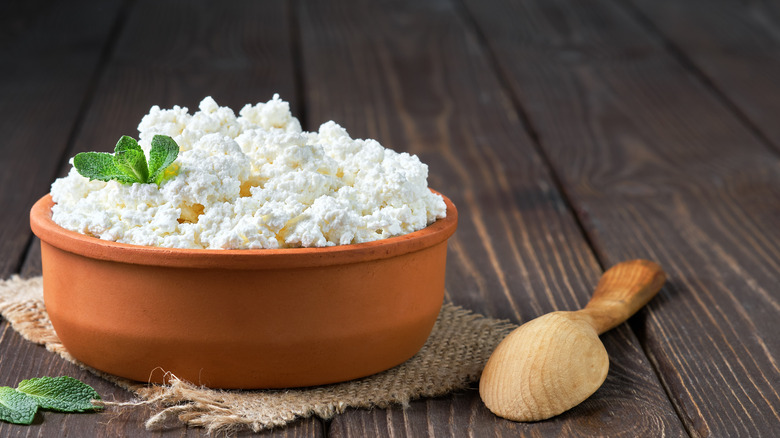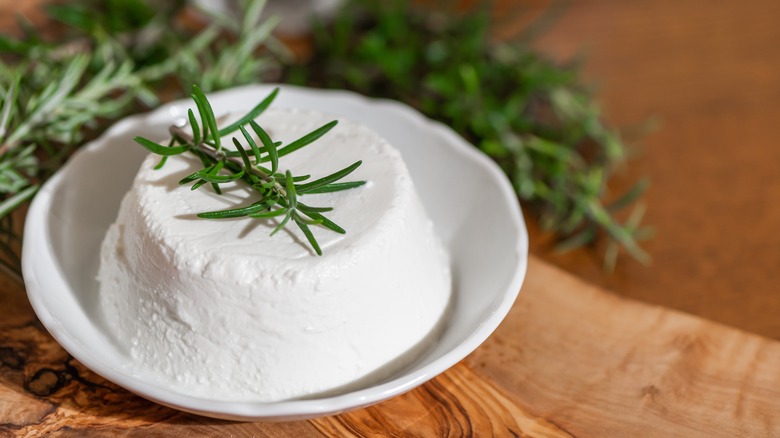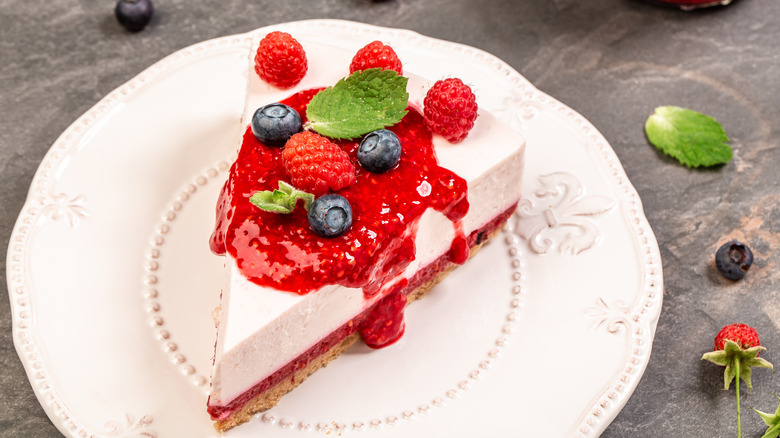Ricotta Is A Slept-On Cream Cheese Substitute For Baking
Although cheese is often used in savory dishes like pastas, sandwiches, and quesadillas, it comes in many forms and can be used in a wide range of baked desserts, too. One of the most popular types for this purpose is cream cheese. Whether it's used in a cheesecake or a Danish, cream cheese brings a rich, decadent quality to sweet treats. But, it isn't the only type that works well in baked goods. Although it might sound unusual, ricotta cheese is an excellent substitute, too.
Ricotta is a moist varietal, and when incorporated into baking recipes, it yields a dewy, sumptuous texture that prevents baked goods from drying out, which is an essential quality for any good pastry. It's not just its moisture content that makes ricotta so appealing, either; it's also a thick, creamy cheese that lends to a luxurious and full-bodied pastry. It also offers a mildly tangy and slightly sweet flavor profile that complements common candied ingredients and takes on the dulcet essence of sugar without compromising its natural, bright flavor.
In addition to boosting the texture and taste of your favorite baked treats, ricotta is a helpful tool when you've made a too-sweet or too-rich batch of pastries as it can balance the sweetness of desserts and provide a counterpoint to rich ingredients like chocolate or butter, creating a more balanced and less cloying taste.
Ricotta versus cream cheese
Now that you're privy to ricotta-infused baked treats, you might wonder how it stacks up to the tried-and-true cream cheese. As its name implies, cream cheese is slightly creamier than ricotta, the latter boasting a granular texture likened to cottage cheese. If you're using ricotta as a cream cheese substitute, you might consider giving it a whirl in a blender or food processor to smooth it out first. Ricotta is more moist than the typically dense and concentrated cream cheese, however, making it a go-to choice for succulent baked goods.
When it comes to flavor, ricotta and cream cheese have similar palates, which is part of what makes them so seamlessly interchangeable. Both boast delicate whispers of zest that won't compromise the overarching neutrality that makes them compatible with a wide range of complementary ingredients.
When it comes to packaging, ricotta is typically sold in a tub, making it easily spreadable and more effortlessly integrated with other ingredients. On the other hand, cream cheese often comes as a firm block, which might require a mixing stand and extra elbow grease to homogenize all of the elements into your batch of baked goods.
Using ricotta in baked goods
Ricotta works well within the full spectrum of baked goods, so as long as you're using your imagination, you'll never run out of ideas for putting it to use. The bottom line is: If a baked good calls for cream cheese, then it can be substituted for ricotta.
You can stuff it into buttery, flaky croissants or crumbly puff pastry pinwheels for a mouthwateringly delicious treat that's crusty on the outside and luxuriously creamy on the inside. And who doesn't love a decadent cake? Use ricotta as a sweet icing or frosting, or fill it into the center of a cake for a tasty surprise that you have to cut open to discover. In Italy, ricotta is actually the go-to base for cheesecake.
While ricotta is an excellent choice for sweet pastries and dulcet baked goods, it's not limited to desserts. It also works well with savory baked goods so don't hesitate to use it as a cream cheese alternative in kolaches, jalapeño poppers, or baked and stuffed chicken breasts.


